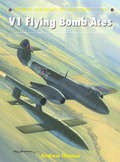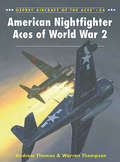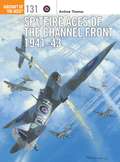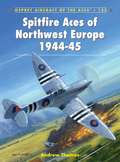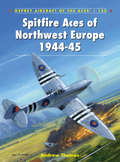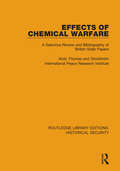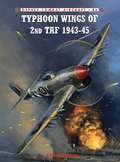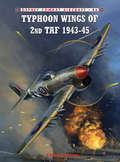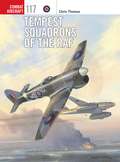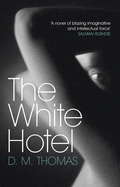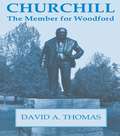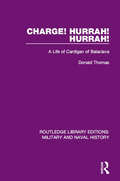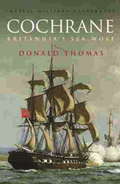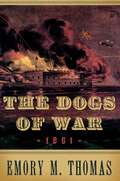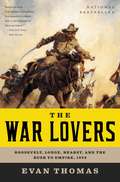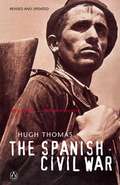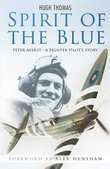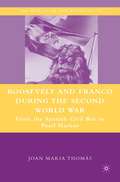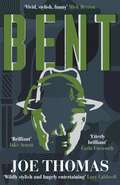- Table View
- List View
V1 Flying Bomb Aces (Aircraft of the Aces #113)
by Andrew Thomas Mr Chris DaveyShortly after the Allied landings in France the Germans unleashed the first of their so-called 'revenge weapons', the V1 flying bomb. Launched from specially constructed sites in northern France, the fast, small, pulse-jet powered pilotless aircraft were aimed at London with the sole intent of destroying civilian morale to the point where the British government would be forced to sue for peace. This dangerous new threat drew an immediate response, and the Air Defence of Great Britain (as Fighter Command had been temporarily renamed) established layers of defence that included a gun line and balloon barrage. The main element, however, were standing patrols by the fastest piston-engined fighters available to the RAF – the new Tempest V and Griffon-powered Spitfire XIV. Other types were allocated too, most notably the Polish Mustang wing, while night defence was left in the capable hands of several dedicated Mosquito squadrons. Although pilotless, the V1 was no easy foe thanks to its speed, powerful warhead and sheer unpredictability. Nevertheless, 154 pilots became V1 aces, 25 of whom were also aces against manned aircraft.
American Nightfighter Aces of World War 2 (Aircraft of the Aces #84)
by Andrew Thomas Mr Chris Davey Mr Mark Postlethwaite Mr Warren ThompsonThe Americans lagged behind their European contemporaries in military aviation in the late 1930s, and it took the Battle of Britain to awaken America to the necessity of having aircraft that could defend targets against night-time attack by bomber aircraft. This book examines the numerous aircraft types that were used by the US in this role, beginning with the early stop-gap conversions like the TBM Avenger, Lockheed Ventura and the A-20 Havoc (P-70). It goes on to detail the combat history of the newer, radar-equipped Hellcats, Corsairs and Black Widows that were designed to seek out enemy aircraft and which registered most of the kills made by the Navy, Marine Corps and USAAF in 1944–45. With full-colour profiles and rare photographs, this is an absorbing account of an underestimated flying force: the American Nightfighters.
Spitfire Aces of the Channel Front 1941-43 (Aircraft of the Aces #131)
by Andrew Thomas Mark Postlethwaite Chris Thomas80 years after the Spitfire was first developed it remains an icon of military aviation. Though many associate its victory during the Battle of Britain as the high point in the history of the Spitfire, the years following were of equal importance. Having weathered the initial storm, at the start of 1941 Fighter Command took the fight to the Germans with offensive missions over the Channel.This book reveals how first using the Spitfire I and II, and then following the introduction of the Bf 109 the cannon-armed Spitfire V, RAF squadrons embarked on a range of missions which included one of the most important air battles of the war, over Dieppe on 19 August 1942. Alongside British pilots were squadrons manned by exiled Europeans and pilots from the RAAF, RCAF and RNZAF. In just three years over 100 of these pilots were to rack up ace status in the Spitfire.
Spitfire Aces of Northwest Europe 1944-45 (Aircraft of the Aces)
by Andrew Thomas Chris ThomasThis book traces the achievements of the pilots flying the iconic Spitfire in Northwest Europe, and examines how the steady technological improvements that were made throughout the Spitfire's service life improved its capabilities in the air. Based at airfields throughout southern England, Merlin engine Spitfires provided the bulk of the air cover for the D-Day landings and it was an RCAF Spitfire which claimed the first ever ME 262 jet kill. 36 colour profiles covering a broad spectrum of nationalities, units, pilots, theatres and markings complement thorough research throughout this comprehensive account of these crucial fighter aircraft.
Spitfire Aces of Northwest Europe 1944-45 (Aircraft of the Aces #122)
by Andrew Thomas Chris ThomasThis book traces the achievements of the pilots flying the iconic Spitfire in Northwest Europe, and examines how the steady technological improvements that were made throughout the Spitfire's service life improved its capabilities in the air. Based at airfields throughout southern England, Merlin engine Spitfires provided the bulk of the air cover for the D-Day landings and it was an RCAF Spitfire which claimed the first ever ME 262 jet kill. 36 colour profiles covering a broad spectrum of nationalities, units, pilots, theatres and markings complement thorough research throughout this comprehensive account of these crucial fighter aircraft.
Spitfire Aces of the Channel Front 1941-43 (Aircraft of the Aces #131)
by Andrew Thomas Chris Thomas Mr Mark Postlethwaite80 years after the Spitfire was first developed it remains an icon of military aviation. Though many associate its victory during the Battle of Britain as the high point in the history of the Spitfire, the years following were of equal importance. Having weathered the initial storm, at the start of 1941 Fighter Command took the fight to the Germans with offensive missions over the Channel.This book reveals how first using the Spitfire I and II, and then following the introduction of the Bf 109 the cannon-armed Spitfire V, RAF squadrons embarked on a range of missions which included one of the most important air battles of the war, over Dieppe on 19 August 1942. Alongside British pilots were squadrons manned by exiled Europeans and pilots from the RAAF, RCAF and RNZAF. In just three years over 100 of these pilots were to rack up ace status in the Spitfire.
Effects of Chemical Warfare: A Selective Review and Bibliography of British State Papers (Routledge Libary Editions: Historical Security)
by Andy Thomas Stockholm International Peace Research InstituteOriginally published in 1985, this book is the result of an exploration of the state papers of the United Kingdom undertaken with the aim of discovering information about the past use of chemical warfare. This information may serve as a point of historical reference in speculation upon the possible nature and consequences of large-scale chemical warfare recurring in Europe. Part I of the monograph concentrates primarily on material documenting the use of chemical weapons in the First and Second World Wars, the impact of this use on the civilian populations of France and Belgium, casualties incurred in the production, research, development, training and deployment of chemical warfare agents, and the attempts made to incorporate chemical weapons into military doctrine and war-preparedness. Part II supplements the citation of documents in Part I. It comprises an ordered bibliography listing not only the location of the records found to be of primary concern to this study, but also the location of other records not cited in Part I which appear to form much of the remainder of the official record of the British CW effort. A list of some of the papers which have not been released comprises the concluding section.
Effects of Chemical Warfare: A Selective Review and Bibliography of British State Papers (Routledge Libary Editions: Historical Security)
by Andy Thomas Stockholm International Peace Research InstituteOriginally published in 1985, this book is the result of an exploration of the state papers of the United Kingdom undertaken with the aim of discovering information about the past use of chemical warfare. This information may serve as a point of historical reference in speculation upon the possible nature and consequences of large-scale chemical warfare recurring in Europe. Part I of the monograph concentrates primarily on material documenting the use of chemical weapons in the First and Second World Wars, the impact of this use on the civilian populations of France and Belgium, casualties incurred in the production, research, development, training and deployment of chemical warfare agents, and the attempts made to incorporate chemical weapons into military doctrine and war-preparedness. Part II supplements the citation of documents in Part I. It comprises an ordered bibliography listing not only the location of the records found to be of primary concern to this study, but also the location of other records not cited in Part I which appear to form much of the remainder of the official record of the British CW effort. A list of some of the papers which have not been released comprises the concluding section.
Typhoon Wings of 2nd TAF 1943–45 (Combat Aircraft #86)
by Chris ThomasThe Typhoon was the RAF's heavyweight fighter-bomber of choice to support the British and Canadian armies during the invasion of northwest Europe. In this book Chris Thomas extols the great importance of the Typhoon wings in the ultimate Allied victory in Europe. He describes their destruction of German radar in the lead-up to D-Day, the use of large-scale rocket projectiles in land battles and pinpoint attacks on German command and control centres, which crippled the Wehrmacht's ability to respond quickly to Allied troop movements. But not everything went smoothly for the Typhoon wings. Their epic battle with highly effective German flak installations prompted Air Chief Marshal Sir Harry Broadhurst to remark 'I suppose that flying one of these aircraft was the most dangerous task the Air Force has ever asked anybody to do'.
Typhoon Wings of 2nd TAF 1943–45 (Combat Aircraft #86)
by Chris ThomasThe Typhoon was the RAF's heavyweight fighter-bomber of choice to support the British and Canadian armies during the invasion of northwest Europe. In this book Chris Thomas extols the great importance of the Typhoon wings in the ultimate Allied victory in Europe. He describes their destruction of German radar in the lead-up to D-Day, the use of large-scale rocket projectiles in land battles and pinpoint attacks on German command and control centres, which crippled the Wehrmacht's ability to respond quickly to Allied troop movements. But not everything went smoothly for the Typhoon wings. Their epic battle with highly effective German flak installations prompted Air Chief Marshal Sir Harry Broadhurst to remark 'I suppose that flying one of these aircraft was the most dangerous task the Air Force has ever asked anybody to do'.
Tempest Squadrons of the RAF (Combat Aircraft #117)
by Chris Thomas Mr Mark PostlethwaiteHawker's charismatic Tempest V entered RAF service just in time to be the most successful counter to the V1 flying bomb assault on southern England in the summer of 1944. With more than 800 of the robot missiles to its credit, Tempest V units then crossed the Channel to lock horns with the best the Luftwaffe had to offer – Fw 190D-9s, Ta 152s, Me 262s and Bf 109G/Ks – achieving an impressive kill/loss ratio in aerial combat.With incredibly detailed aircraft profiles and exciting combat reports this title covers the full history of Tempest squadrons, from their initial design and combat experience in World War 2 through to their post-war role and the eventual decline of this iconic British fighter.
The White Hotel: Shortlisted for the Booker Prize 1981
by D M ThomasShortlisted for the Man Booker Prize, THE WHITE HOTEL is a modern classic of searing eroticism and sensuality set against the broad sweep of twentieth-century history.Now a BBC radio play starring Anne-Marie Duff and Bill Paterson, dramatised by Dennis Potter.'A novel of blazing imaginative and intellectual force' Salman Rushdie It is a dream of electrifying eroticism and inexplicable violence, recounted by a young woman to her analyst, Sigmund Freud. It is a horrifying yet restrained narrative of the Holocaust. It is a searing vision of the wounds of our century and an attempt to heal them. Interweaving poetry and case history, fantasy and historical truth-telling, THE WHITE HOTEL is a modern classic of enduring emotional power that attempts nothing less than to reconcile the notion of individual destiny with that of historical fate.'A remarkable and original novel . . . there is no novel to my knowledge which resembles this in technique or ideas. It stands alone' Graham Greene'Astonishing . . . A forthright sensuality mixed with a fine historical feeling for the nightmare moments in modern history, a dreamlike fluidity and quickness' John Updike'I quickly came to feel that I had found that book, that mythical book, that would explain us to ourselves' Leslie Epstein, New York Times
Churchill, the Member for Woodford
by David A. ThomasFor nearly 40 years "among the glades of Epping Forest" Churchill found a base for his parliamentary life. This book relates with anecdotal and archival evidence the attempt to unseat him after what many supporters considered an injudicious Munich speech.
Churchill, the Member for Woodford
by David A. ThomasFor nearly 40 years "among the glades of Epping Forest" Churchill found a base for his parliamentary life. This book relates with anecdotal and archival evidence the attempt to unseat him after what many supporters considered an injudicious Munich speech.
Charge! Hurrah! Hurrah!: A Life of Cardigan of Balaclava (Routledge Library Editions: Military and Naval History)
by Donald ThomasFor James Thomas Brudenell, 7th Earl of Cardigan, leading the Light Brigade at Balaclava was but one incident in a life of sensation and notoriety. Donald Thomas’s biography, originally published in 1977, and based on new material when originally published, shows this most controversial Victorian against a panorama of regimental intrigue and aristocratic luxury. Dismissed from the army for ‘revolting’ conduct, Cardigan bought the command of the 11th Hussars (the ‘Cherry Bums’) for £40,000 a few years later. Regimental rivalries led to the ‘Black Bottle’ scandal of 1840 and to a duel in which he shot a brother officer. Charged with attempted murder, Cardigan was the only Victorian peer to be tried by the House of Lords. Nonetheless, his seductions of other men’s wives rivalled his regimental misdemeanours in press reports. He was jeered int he streets, hissed at the theatre and burnt in effigy. It took the glory and the folly of Balaclava to turn ‘this plague-spot of the British army’ into ‘the most popular soldier in England’. Greeted everywhere by cheering crowds, their new hero fought duels and libel actions against those who denied his bravery before the Russian guns. For all his misbehaviour, Cardigan remains warm-blooded, generous, impulsive and courageous, as well as obstinate, proud and sometimes ridiculous. Hated by numerous men, and adored by many women, his elopement with the beautiful Adeline Horsey de Horsey was a triumph of his old age.
Charge! Hurrah! Hurrah!: A Life of Cardigan of Balaclava (Routledge Library Editions: Military and Naval History)
by Donald ThomasFor James Thomas Brudenell, 7th Earl of Cardigan, leading the Light Brigade at Balaclava was but one incident in a life of sensation and notoriety. Donald Thomas’s biography, originally published in 1977, and based on new material when originally published, shows this most controversial Victorian against a panorama of regimental intrigue and aristocratic luxury. Dismissed from the army for ‘revolting’ conduct, Cardigan bought the command of the 11th Hussars (the ‘Cherry Bums’) for £40,000 a few years later. Regimental rivalries led to the ‘Black Bottle’ scandal of 1840 and to a duel in which he shot a brother officer. Charged with attempted murder, Cardigan was the only Victorian peer to be tried by the House of Lords. Nonetheless, his seductions of other men’s wives rivalled his regimental misdemeanours in press reports. He was jeered int he streets, hissed at the theatre and burnt in effigy. It took the glory and the folly of Balaclava to turn ‘this plague-spot of the British army’ into ‘the most popular soldier in England’. Greeted everywhere by cheering crowds, their new hero fought duels and libel actions against those who denied his bravery before the Russian guns. For all his misbehaviour, Cardigan remains warm-blooded, generous, impulsive and courageous, as well as obstinate, proud and sometimes ridiculous. Hated by numerous men, and adored by many women, his elopement with the beautiful Adeline Horsey de Horsey was a triumph of his old age.
Cochrane: Britannia's Sea Wolf (Sven Hassel War Classics)
by Donald ThomasBestselling account of the life of a real Horatio HornblowerThe life of Thomas, Lord Cochrane, later 10th Earl of Dundonald, was more extraordinary than that of Nelson, more far fetched than that of Hornblower or Patrick O'Brien's Jack Aubrey. Born the son of an eccentric and indigent Scottish peer, he entered the Royal Navy in 1793. In a series of outstanding and heroic actions, often against seemingly overwhelming odds, he made his name fighting Napoleon's navy as one of the most dashing and daring frigate captains of his day, before embarking on a career as a mercenary admiral.
The Dogs of War: 1861 (Pivotal Moments in American History)
by Emory M. ThomasIn 1861, Americans thought that the war looming on their horizon would be brief. None foresaw that they were embarking on our nation's worst calamity, a four-year bloodbath that cost the lives of more than half a million people. But as eminent Civil War historian Emory Thomas points out in this stimulating and provocative book, once the dogs of war are unleashed, it is almost impossible to rein them in. In The Dogs of War, Thomas highlights the delusions that dominated each side's thinking. Lincoln believed that most Southerners loved the Union, and would be dragged unwillingly into secession by the planter class. Jefferson Davis could not quite believe that Northern resolve would survive the first battle. Once the Yankees witnessed Southern determination, he hoped, they would acknowledge Confederate independence. These two leaders, in turn, reflected widely held myths. Thomas weaves his exploration of these misconceptions into a tense narrative of the months leading up to the war, from the "Great Secession Winter" to a fast-paced account of the Fort Sumter crisis in 1861. Emory M. Thomas's books demonstrate a breathtaking range of major Civil War scholarship, from The Confederacy as a Revolutionary Experience and the landmark The Confederate Nation, to definitive biographies of Robert E. Lee and J.E.B. Stuart. In The Dogs of War, he draws upon his lifetime of study to offer a new perspective on the outbreak of our national Iliad.
The Dogs of War: 1861 (Pivotal Moments in American History)
by Emory M. ThomasIn 1861, Americans thought that the war looming on their horizon would be brief. None foresaw that they were embarking on our nation's worst calamity, a four-year bloodbath that cost the lives of more than half a million people. But as eminent Civil War historian Emory Thomas points out in this stimulating and provocative book, once the dogs of war are unleashed, it is almost impossible to rein them in. In The Dogs of War, Thomas highlights the delusions that dominated each side's thinking. Lincoln believed that most Southerners loved the Union, and would be dragged unwillingly into secession by the planter class. Jefferson Davis could not quite believe that Northern resolve would survive the first battle. Once the Yankees witnessed Southern determination, he hoped, they would acknowledge Confederate independence. These two leaders, in turn, reflected widely held myths. Thomas weaves his exploration of these misconceptions into a tense narrative of the months leading up to the war, from the "Great Secession Winter" to a fast-paced account of the Fort Sumter crisis in 1861. Emory M. Thomas's books demonstrate a breathtaking range of major Civil War scholarship, from The Confederacy as a Revolutionary Experience and the landmark The Confederate Nation, to definitive biographies of Robert E. Lee and J.E.B. Stuart. In The Dogs of War, he draws upon his lifetime of study to offer a new perspective on the outbreak of our national Iliad.
The War Lovers: Roosevelt, Lodge, Hearst, and the Rush to Empire, 1898
by Evan ThomasOn February 15, 1898, the American ship USS Maine mysteriously exploded in the Havana Harbor. News of the blast quickly reached U.S. shores, where it was met by some not with alarm but great enthusiasm. A powerful group of war lovers agitated that the United States exert its muscle across the seas. Theodore Roosevelt and Henry Cabot Lodge were influential politicians dismayed by the "closing" of the Western frontier. William Randolph Hearst's New York Journal falsely heralded that Spain's "secret infernal machine" had destroyed the battleship as Hearst himself saw great potential in whipping Americans into a frenzy. The Maine would provide the excuse they'd been waiting for. On the other side were Roosevelt's former teacher, philosopher William James, and his friend and political ally, Thomas Reed, the powerful Speaker of the House. Both foresaw a disaster. At stake was not only sending troops to Cuba and the Philippines, Spain's sprawling colony on the other side of the world-but the friendships between these men. Now, bestselling historian Evan Thomas brings us the full story of this monumental turning point in American history. Epic in scope and revelatory in detail, The War Lovers takes us from Boston mansions to the halls of Congress to the beaches of Cuba and the jungles of the Philippines. It is landmark work with an unforgettable cast of characters-and provocative relevance to today.
The War Lovers: Roosevelt, Lodge, Hearst, and the Rush to Empire, 1898
by Evan ThomasOn February 15, 1898, the American ship USS Maine mysteriously exploded in the Havana Harbor. News of the blast quickly reached U.S. shores, where it was met by some not with alarm but great enthusiasm. A powerful group of war lovers agitated that the United States exert its muscle across the seas. Theodore Roosevelt and Henry Cabot Lodge were influential politicians dismayed by the "closing" of the Western frontier. William Randolph Hearst's New York Journal falsely heralded that Spain's "secret infernal machine" had destroyed the battleship as Hearst himself saw great potential in whipping Americans into a frenzy. The Maine would provide the excuse they'd been waiting for. On the other side were Roosevelt's former teacher, philosopher William James, and his friend and political ally, Thomas Reed, the powerful Speaker of the House. Both foresaw a disaster. At stake was not only sending troops to Cuba and the Philippines, Spain's sprawling colony on the other side of the world-but the friendships between these men. Now, bestselling historian Evan Thomas brings us the full story of this monumental turning point in American history. Epic in scope and revelatory in detail, The War Lovers takes us from Boston mansions to the halls of Congress to the beaches of Cuba and the jungles of the Philippines. It is landmark work with an unforgettable cast of characters-and provocative relevance to today.
The Spanish Civil War: An Eyewitness Account Of The Spanish Civil War (Pelican Ser.)
by Hugh ThomasThough more than half a century has passed since the Spaish Civil War began in 1936, it is still the subject of intense controversy. What was it that roused left wing sympathisers from all over the world to fight for a cause for which their governments would not give active support? In his famous history, Hugh Thomas presents an objective analysis of a conflict - where fascism and democracy, communism and Christianity, centralism and regionalism were all at stake - and which was a much an international civil war as a Spanish one.
Spirit of the Blue: Peter Ayerst - A Fighter Pilot's Story
by Hugh ThomasPeter joined the R.A.F. in 1938 on a short-service commission and was despatched to France when war broke out. After serving with legendary fighter ace Douglas Bader, Peter was posted to North Africa in 1942, where he was forced to crash-land his Hurricane in a minefield. He flew Spitfires on intruder sorties over France before and during D-Day, on bomber escort duty against V-weapons sites and in support of mass daylight raids deep into Germany. Awarded the D.F.C. in December 1944, he also flew as fighter escort to King George VI's Dakota. By the war's end, Peter had flown every mark of Spitfire and Hurricane in the R.A.F.'s inventory.
Roosevelt and Franco during the Second World War: From the Spanish Civil War to Pearl Harbor (The World of the Roosevelts)
by J. ThomàsThis book examines the internal controversies of the Roosevelt administration in connection with Spain during World War II, the role of the President in these controversies, and the foundations of the policy that was followed from the outbreak of the Spanish Civil War until the launching of Operation Torch in 1942.
Bent
by Joe ThomasGuardian Best Book of 2020 Irish Times Best Crime Fiction of 2020 Times Book of the Month Mail on Sunday Thriller of the Month The Spectator Crime Fiction of the Month Crime Time Book of the Year 2020 'Vivid, stylish, funny' Mick Heron The first time I met Harold Challenor, he frisked me for weapons - I was ten years old. Bent is the explosive story of the rise and fall of SAS commando, and notorious Detective Sergeant, Harold 'Tanky' Challenor. During the Second World War, Challenor was parachuted behind enemy lines into Italy and France, performing remarkable feats of bravery. In the grimy underbelly of 1960s Soho, he was a ferocious and controversial presence, mediating between factions of club owners and racketeers, and cultivating informers. But just how far will he go to break the protection gang that has a grip on his manor? It can be a fine line that divides hero and villain. PRAISE FOR JOE THOMAS 'Brilliant' The Times 'Feverish energy' Guardian 'Wonderfully vivid' Mail on Sunday'Sophisticated, dizzying' GQ'Vivid and visceral' The Times'Superbly realised vivid and atmospheric' Guardian'Original' Mail on Sunday'A stylish, atmospheric treat an inspired blend of David Peace and early Pinter' Irish Times 'Sparse, energetic, fragmented prose' The Spectator 'Vibrant, colourful, and complex' Irish Independent 'Stylish, sharp-witted, taut. A must for modern noir fans' NB Magazine 'Definitive confident and energetic' Crime Time 'Brilliant manic energy' Jake Arnott 'Wildly stylish and hugely entertaining' Lucy Caldwell 'Vivid, stylish, funny' Mick Herron 'Gripping, fast-paced, darkly atmospheric' Susanna Jones 'Snappy, thoughtful, moving' John King 'Exciting, fresh, incredibly assured' Stav Sherez 'Happy days!' Mark Timlin 'Utterly brilliant' Cathi Unsworth 'Had James Ellroy and David Peace collaborated on a novel they'd have written something like this' Paul Willets
